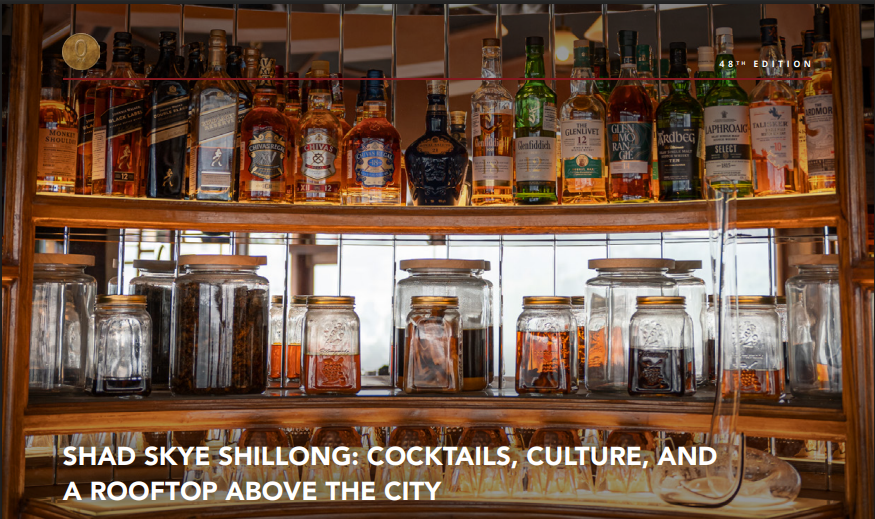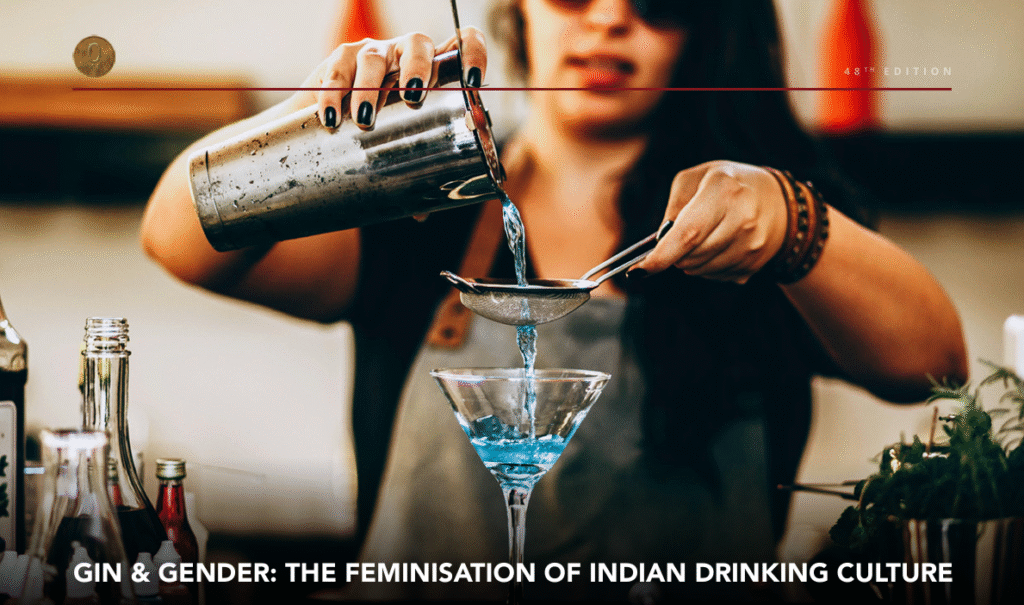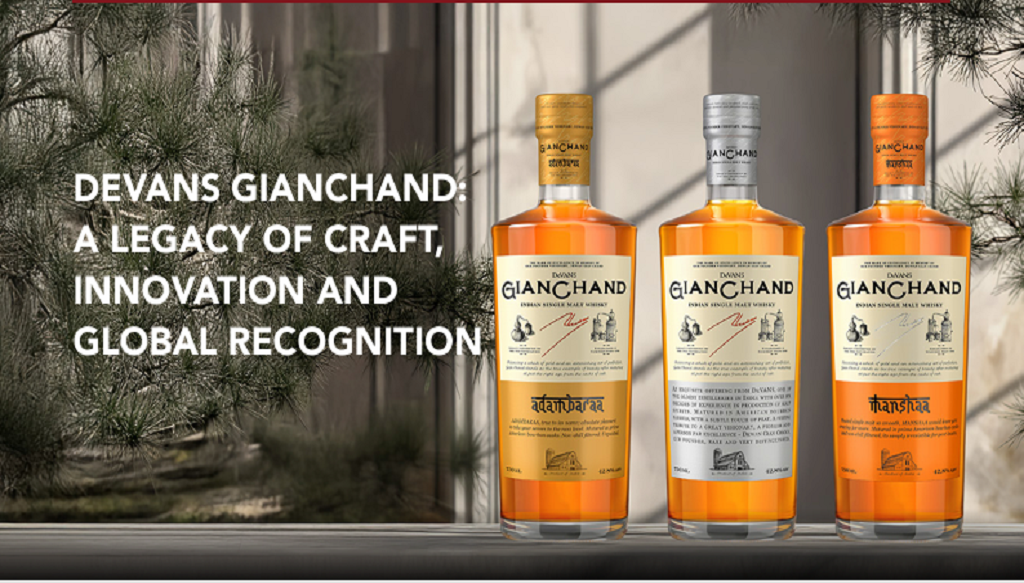SHAD SKYE, SHILLONG – COCKTAIL, CULTURE AND A ROOFTOP ABOVE THE CITY “FEATURE DESK”
SHAD SKYE, SHILLONG From Features Desk Step out of Shillong’s narrow lanes and onto arooftop where the city seems to fall away. The airis cooler here, carrying the scent of rain-soakedpine and faint floral notes that linger like a secret.Brass glimmers in the fading sunlight, polishedwood feels grounding underfoot, and the horizonrolls with clouds curling over the hills. In yourhand, a glass reflects the colours of dusk, holdingnot just a drink but a story. This is Shad Skye: part cocktail bar, part cultural map, and entirely a celebration of the Northeast. A Name That Dances The name itself is a story. “Shad” means dance in Khasi, while “Skye”, from the Latin for sky, evokes freedom, movement, and boundless beauty. Together, they capture what this space truly offers, a celebration that rises above, both literally and figuratively.Cocktails That Tell Stories Shad Skye’s vision is bold yet intimate. It brings together the distinctive ingredients of the eightNortheastern states, interpreted with creativity and care by Head of Beverage, Rishot Laloo. He doesn’t just mix cocktails, he curates experiences. “Every cocktail is a conversation between the land and the glass,” says Rishot. “The goal is for guests to taste not just the flavour but the place it comes from.” Eight States, Eight Flavours Each cocktail is inspired by a state, turning heritage into liquid form: • Living Roots (Meghalaya): Inspired by the living root bridges, with earthy khus root, sweet carrot, and resinous pine. • Delicious Black (Manipur): A tribute to royal black rice harvests, blended with coconut cream and cardamom warmth. • Tuaite (Mizoram): Bamboo shoot meets jasmine’s floral delicacy and the sharp bite of ginger. • Wild Bloom (Arunachal Pradesh): Foraged herbs, wild citrus, and floral honey mirror the freshness of the mountains. • Golden Harvest (Assam): Assam’s iconic tea, woven with orchard fruits and gentle spices. • Smoked Ember (Nagaland): A smoky marriage of local chillies, charred pineapple, and dark rum. • Pine Valley (Tripura): Tropical pineapple balanced with kaffir lime and Himalayan salt. • Orchid Mist (Sikkim): Delicate orchid essence paired with apricot brandy and a subtle sparkle. Every recipe starts with a journey, a hillside market at dawn, a conversation with a farmer, or a trek to a remote valley. Rishot spends weeks tracing each flavour to its roots before slowly crafting infusions back in Shillong. It’s a meditative process where patience and precision decide when a cocktail finally feels complete. The Shad Skye Classics Beyond the state-inspired collection, the Shad Skye Classics reimagine timeless cocktails with local character: Ghost Pepper Picante: Tequila meets the fiery ghost pepper, balanced by rose petals and crisp apple juice. Culantro Mojito: A refreshing twist on the classic, using culantro instead of mint. Darjeeling Iced Tea: A misty mountain memory with black tea, guava juice, and a sparkling lift.A Rooftop That Breathes The space itself is an experience. Minimalist design, warm brass accents, and clean wooden lines allow the panoramic view of Shillong to shine. Each detail, from the furniture to the lighting, is chosen with intention, creating a space that feels both luxurious and grounding. But beauty here is matched with purpose. Shad Skye is deeply committed to sustainability, sourcing locally and building partnerships with growers, foragers, and communities. Every cocktail becomes not only a drink but a way of honouring the land and its people. More Than Just Cocktails At Shad Skye, drinks do more than quench thirst; they tell stories, carry traditions, and celebrate landscapes. Each sip feels like a dance, each glass like a piece of sky. And in Shillong, where the hills meet the clouds, that makes Shad Skye unforgettable.
SHAD SKYE, SHILLONG – COCKTAIL, CULTURE AND A ROOFTOP ABOVE THE CITY “FEATURE DESK” Read More »



